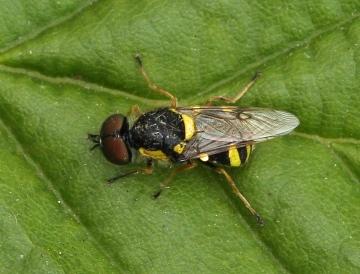Species Account for Oxycera rara
Oxycera rara (Scopoli, 1763)
Diptera: Larger Brachycera: Stratiomyidae

Reproduction for study and non-profit use permitted, all other rights reserved.
Taxonomic group: soldier flies and allies (Diptera: Larger Brachycera) - County data
View time series maps for Oxycera rara
member log-on for taxon report
Essex RDB: Listed
Images
upload a new image
Essex Red Data List comment
Probably small localised populations. Recorded from Barking Levels (now almost completely lost to development), Danbury, South Stifford, Walthamstow Marshes and Epping Forest.
Species text
It is fairly widespread in southern and midland England, scarcely extending further north before being replace by O. dives. In Essex there are probably small localised populations, and it has been recorded e.g. from Barking Levels (now almost completely lost to development), Danbury, South Stifford Walthamstow Marshes and Sandon. The larvae have been found in moss and on mud in open seepages associated with springs, and on wet mud at the margins of ponds and ditches. It is a species of open sunny places, where adults can normally be seen sitting on herbage or the sunlit foliage of nearby trees (Stubbs & Drake 2001). References
Habitats
Recorded management for locations with Oxycera rara
Recorded substrate and hydrology for locations with Oxycera rara
Why not join the Club, register and add a new species page
Interpretation of distribution maps






















